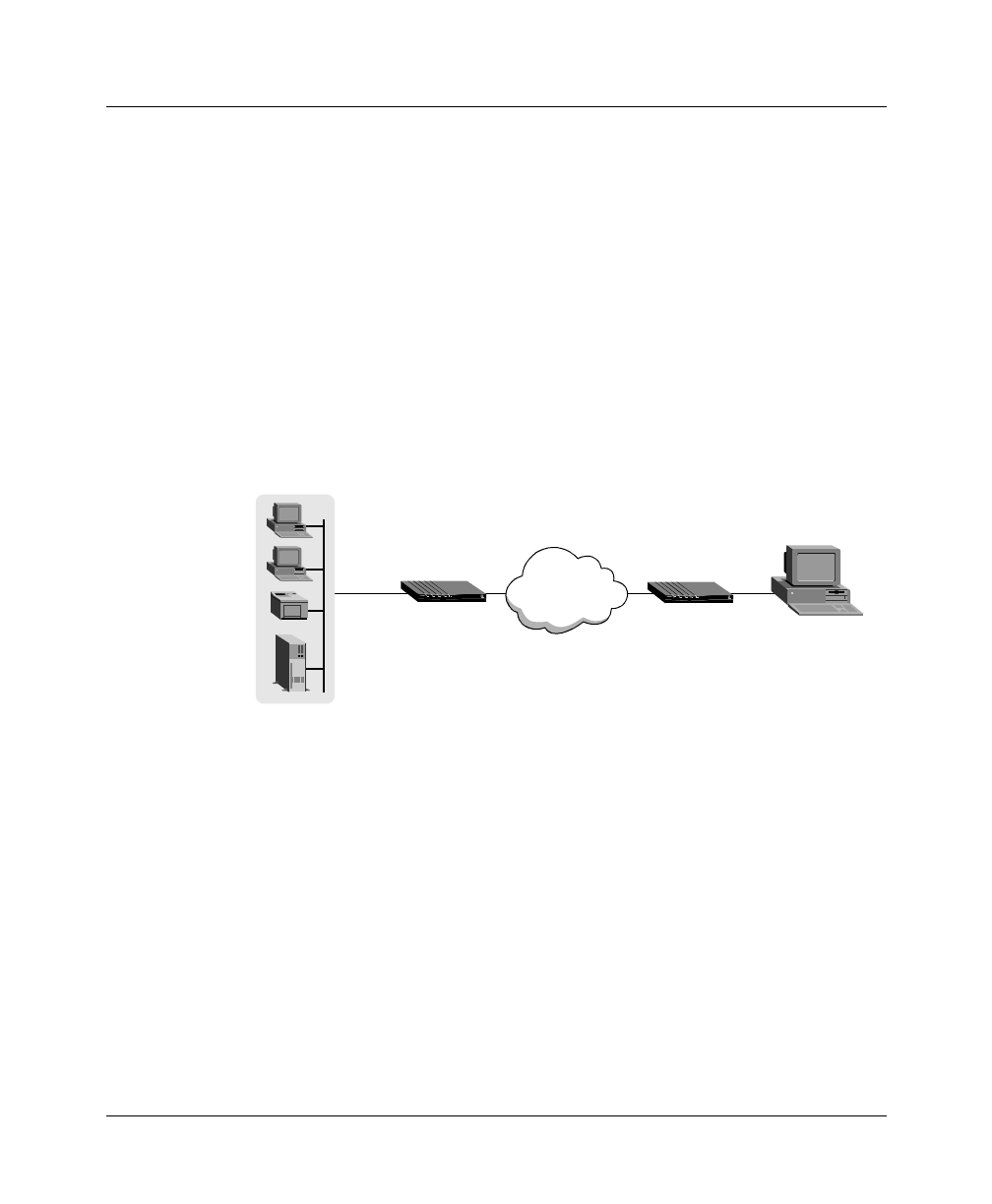User`s guide
Table Of Contents
- Ascend Customer Service
- How to use this guide
- What you should know
- Documentation conventions
- How to use the on-board software
- Manual set
- Configuring WAN Connections
- Configuring IP Routing
- Introduction to IP routing on the Pipeline
- Managing the routing table
- Parameters that affect the routing table
- Static and dynamic routes
- Configuring static routes
- Specifying default routes on a per-user basis
- Enabling the Pipeline to use dynamic routing
- Route preferences
- Viewing the routing table
- Fields in the routing table
- Removing down routes to a host
- Identifying Temporary routes in the routing table
- Configuring IP routing connections
- Ascend Tunnel Management Protocol (ATMP)
- IP Address Management
- Connecting to a local IP network
- BOOTP Relay
- DHCP services
- Dial-in user DNS server assignments
- Local DNS host address table
- Network Address Translation (NAT) for a LAN
- Configuring IPX Routing
- How the Pipeline performs IPX routing
- Adding the Pipeline to the local IPX network
- Working with the RIP and SAP tables
- Configuring IPX routing connections
- Configuring the Pipeline as a Bridge
- Defining Filters and Firewalls
- Setting Up Pipeline Security
- Pipeline System Administration
- Pipeline 75 Voice Features
- IDSL Implementations
- APP Server utility
- About the APP Server utility
- APP Server installation and setup
- Configuring the Pipeline to use the APP server
- Using App Server with Axent SecureNet
- Creating banner text for the password prompt
- Installing and using the UNIX APP Server
- Installing and using the APP Server utility for DO...
- Installing and using the APP Server utility for Wi...
- Installing APP Server on a Macintosh
- Troubleshooting
- Upgrading system software
- What you need to upgrade system software
- Displaying the software load name
- The upgrade procedure
- Untitled

Configuring IPX Routing
Configuring IPX routing connections
Pipeline User’s Guide Preliminary January 30, 1998 4-29
Server Type=0004
Connection #=2
Note:
The Connection # parameter in the IPX Route profile must match the
number of the Connection profile you configured to that site.
8
Close the IPX Route profile.
An example with local NetWare servers only
In the following example, the Pipeline is connected to a local IPX network that
has both servers and clients, and the Pipeline will connect to a geographically
remote network that supports one or more NetWare clients. Figure 4-3 shows the
example setup.
Figure 4-3. A dial-in client that belongs to its own IPX network
In this example, site A implements NetWare 3.12 servers, NetWare clients, and a
Pipeline. The NetWare server at site A is configured with the following
information:
Name=SERVER-1
internal net CFC12345
Load 3c509 name=ipx-card frame=ETHERNET_8023
Bind ipx ipx-card net=1234ABCD
WAN
NET=1000CFFF
Ethernet
NET=1234ABCD
Site B
Site A
NetWare client
NetWare servers
and clients










